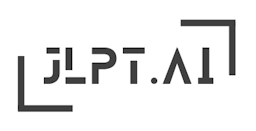

N2
音読み:shou
訓読み:tsuku
ショウshou
つ.くtsuku
Collide, clash, rush
Imagine two cars colliding head-on, creating a powerful impact. This collision represents the meaning of '衝' - the intense clash or rush.
The kanji '衝' is commonly tested in JLPT N2 and is important for understanding advanced vocabulary and reading passages related to collisions, clashes, and rushes.
彼らは激しく衝突しました。
They collided violently.
かれらははげしくしょうとつしました。
karera wa hageshiku shoutotsu shimashita.
事故を避けるため、注意して衝突を回避してください。
Please be careful and avoid collisions to prevent accidents.
じこをさけるため、ちゅういしてしょうとつをかいひしてください。
jiko o sakeru tame, chuui shite shoutotsu o kaihishite kudasai.
彼は突然に道路に飛び出し、車と衝突した。
He suddenly dashed out onto the road and collided with a car.
かれはとつぜんにどうろにとびだし、くるまとしょうとつした。
kare wa totsuzen ni douro ni tobidashi, kuruma to shoutotsu shita.